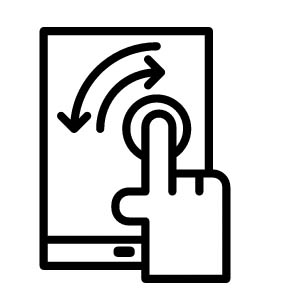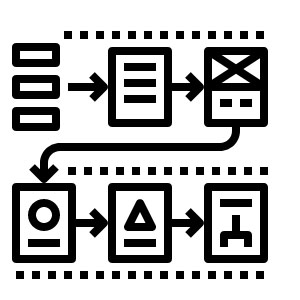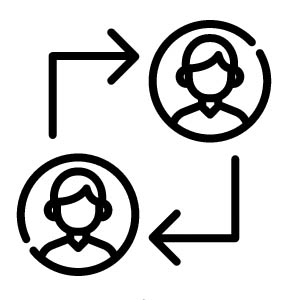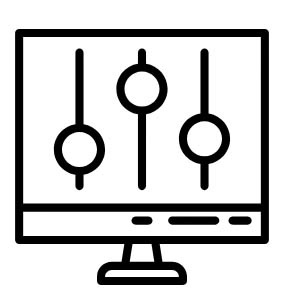
A clean design layout can tremendously boost your sales and improve your conversion rate. Why? Because the beauty of basic attracts visitors and delivers useful information faster. No clutter, no popups, no distractions. This is why many e-commerce websites stick to a minimalist design strategy.
What is a minimalist website design?
Minimalism is a style and marketing attitude. It’s possibly one of the most difficult website designs to conceive and strategize. Less is more is a well-known expression, but designing less is not always easy. As Albert Einstein says “the definition of genius is taking the complex and making it simple.”
Simplicity is a timeless trend in web design. If executed well, а minimalist design extracts the essence of the brand’s message and matches it to user needs. The goal is to present the core content in a direct way, with as little distractions as possible.
 MAKING THINGS SIMPLE IS A COMPETITIVE ADVANTAGE
MAKING THINGS SIMPLE IS A COMPETITIVE ADVANTAGE
Creating a minimalist website design demands great expertise. It’s branding on steroids, scrubbed from unnecessary words, colors, shapes, and features. This means understanding the exact business goal of a website and aiming for the primary target audience.
Simplicity forces people to think wisely about design from a business point of view. You have to be very clear about what are you trying to convey, then align your goals with users’ personality, your target platform, devices, and scope metrics.
You need strong business intelligence and a strong research team. What is the essence of the brand? What is the goal of the project (landing page/website/campaign)? What is the target market and how are we attracting new customers? You need to peel all the layers of marketing fluff to get to the core of the message. Creating a minimalist design means presenting the naked truth. Bare. Simple. Holistic.
To engineer simplicity, you need to understand your customers’ online journey. Print out every page of your sign-up process. Can you eliminate steps and ease the process? What do people search for using your search bar? Where do they click? How did they get here? How can you maximize your home page’s layout?
Since making things simple takes more research, more thinking, and more strategizing, you end up summarizing your core business value to the point that users “get you” in less than a few seconds when they land on your page.
CREATE EASY INTERACTIONS
Simplifying your website means simplifying your calls to action. Simplified calls to action bring an undeniable increase in engagement. Tinder is a perfect example of simple interaction design. Swipe left or right. That’s it. It becomes almost a game that users become addicted to.
LOOK AND FEEL
A minimalist vision injects elegance and confidence. Using white space and clean elements gives your brand a well-established, self-confident, and fearless look. No bells and whistles needed to show off your essence. This type of design highlights the most important elements- your products, prices, and calls to action.
FLUID MOBILE INTERFACE
Building a clean layout means extreme fluidity from mobile to desktop to TV screen. Having your website adapt to any screen size pays off with mobile advertising. The variety of screen sizes has encouraged brands to look at responsiveness as a top priority in their online marketing. This trend is only growing. Mobile-first and fluid designs are becoming the golden standard of digital advertising.
 DRIVE FOCUS
DRIVE FOCUS
Building a flat website design commits to clarity and user experience. The typography, grids, space, scale, colors, and imagery- create hierarchy, meaning, and focus. Custom icons and patterns are used as extras to draw the user’s eye through the page. Motion and perfectly timed animations reinforce the user as the prime doer, creating continuity as elements transform and reorganize. Google actually recommends using depth and visual hierarchy with drop shadows to create designs that mimic real behaviors. If you’re curious about this, check out Google’s visual library, it holds great guidelines and best practices for designing a minimalist vision.
The overall idea: if users are not distracted by sparkling colors and animations, they’ll be more invested in the content. And this is your web design’s ultimate goal; keep visitors engaged while navigating effortlessly through your pages.
 IMPROVE USER EXPERIENCE
IMPROVE USER EXPERIENCE
When your website is designed at the bare minimum, every detail carries meaning - from color palettes, to design elements, to a particular animation. What is the feeling you are trying to convey? Your digital agency will work around that key emotion to assemble the design. Your mood can appear modern, sophisticated, or groovy, based solely on small details.
To increase conversion rates, a minimalist design layout treats every choice your customers have to make as if it is nearly insurmountable. Assume people are overwhelmed by priorities and the smallest thing will make them drop off your site.
Aesthetics + Functionality + Solid Business Analysis = Minimalist Design
 UNIQUE BRAND-THEMED ILLUSTRATIONS
UNIQUE BRAND-THEMED ILLUSTRATIONS
A minimalist design is a great opportunity to develop your own illustrations and icons. Illustrations that match the tone of your brand communicate about your company’s personality in a powerful way. Tailored drawings can help your business stand out and boost your brand recognition. Sketches can also add an element of fun to your site and make your concept unique (think of Google, DropBox, Shopify, or Mailchimp).
 MAINTENANCE
MAINTENANCE
A simple website design is simpler to maintain. No heavy forms or plugins to update. Fewer applications mean less HTTPS requests, which helps the site load faster and improves user experience and your conversion rate.
Personalization, customization, and unique user experiences are making the digital world ever more intuitive and human-like. Meeting user expectations and delivering tailored information is a game-changer in digital marketing.
To embrace the minimalist attitude and engineer simplicity, brands need to focus on the problems they solve, not the services they offer.
Based on the current trends, the future will hold simpler designs and minimalist interfaces. It will also bring a greater focus on user experience using flat/material design as the visual language for each project.
Let’s boost your website design together. For advice, say hello@edesigninteractive.com.


